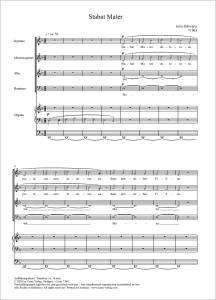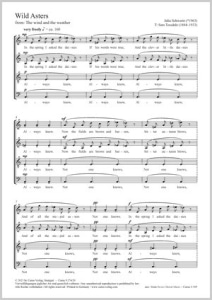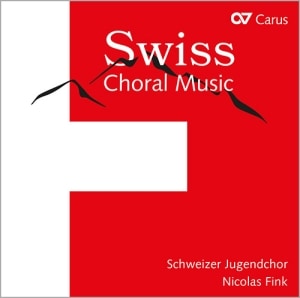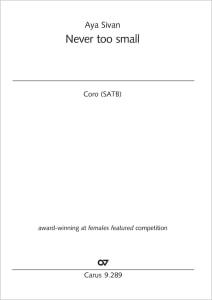6 Questions for Julia Schwartz
An Interview
Julia Schwartz composes in practically all genres, and a whole series of her compositions have been published by Carus, from The Wind and the Weather to her contributions to the choir book Swiss Choral Music, the a capella choral works Stabat Mater and Wild Asters. In this interview, she answers six questions about composing and what she likes to do when she has some time off from composing.
What was your first composition?
Whispers of Heavenly Death, five settings of poems by Walt Whitman, 1993
Which other composers inspire you?
Countless! Here are a few in alphabetical order, but it’s an incomplete list: Ades, Bach, Bartok, Beach, Boulanger, Brahms, Gubaidulina, Mozart, Poulenc, Ravel, Stravinsky, Tailleferre, Verdi, Weill…
Your most emotional musical experience to date?
An early one, when I was 18 and at summer music camp. We were rehearsing Verdi’s Requiem, there were about 200 singers and we sang with a huge orchestra. I was standing behind the bass drum and the Dies Irae shook me to the core. It was both emotional and physical!
Where do you prefer to compose?
Musical material or inspiration can strike me anywhere, and I jot down tone sequences or ideas about structures wherever I happen to be. When I start a new work, I look at my notes and put my initial ideas down on paper, sometimes completely randomly. At some stage the threads come together and I can begin to compose – preferably at my desk at home.
What are you working on at the moment?
Two projects: firstly, I’ve just completed an operetta with playwright Stephan Teuwissen. It’s called Luzifers Lied (Lucifer’s Song) – it’s a humorous, funny look at Lucifer’s fall from heaven.
And, secondly,
A commission for a nine-piece ensemble (string quartet, flute, oboe, clarinet and bassoon) which will be premiered by the ensemble Le Pli in Bolivia in summer 2024 and then in autumn in Switzerland.
When you’re not composing or making music, then…
I read, cook, cycle, practise tango, rest (if there’s enough time) …
The Wind and the Weather
By Julia Schwartz
Carus 9.274/00
Stabat Mater
By Julia Schwartz
Carus 7.801/00
Wild Asters
By Julia Schwartz
Carus 9.274/20
Separate edition from the choral collection Swiss Choral Music
CD Swiss Choral Music
Includes, among others, a recording of Wild Asters.
Carus 2.305/99












Leave a Reply
Want to join the discussion?Feel free to contribute!